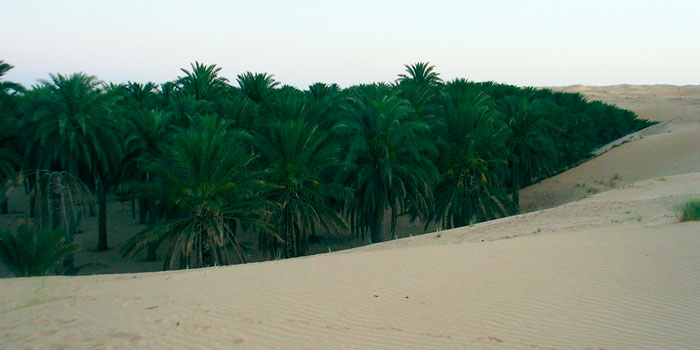Ghout Oasis system El Oued, Algeria
GIAHS since 2011

In the desert of Algeria, local communities have had to face dry and hot climatic conditions. Thanks to the groundwater deep into the soil, farmers have succeeded in finding dunes and water management to use and conserve it. This is how they have created the ghout system allowing them to grow food plants and livestock from the 15th century.
The ghout traditional hydro agricultural system consists in digging into the soil using wind knowledge to plant date palm at the top of the groundwater resources. This system integrates at the same time vegetable, cereal, fruit trees and date palm production through a complex multi layered organization. Divided in three levels, these mixed crops are sustainable looking at the soil and water resources.
There are more than 9500 ghouts shaping the landscape of the desert. Not exceeding 0, 5 hectare, these green and living ‘islands’ turn the Souf region into a unique place. Indeed, ghout plays also a role as a habitats maintaining biodiversity for plants, insects and animals. Sustainable and adapted to dry conditions, ghout are currently threatened by the use of groundwater for the cities.

